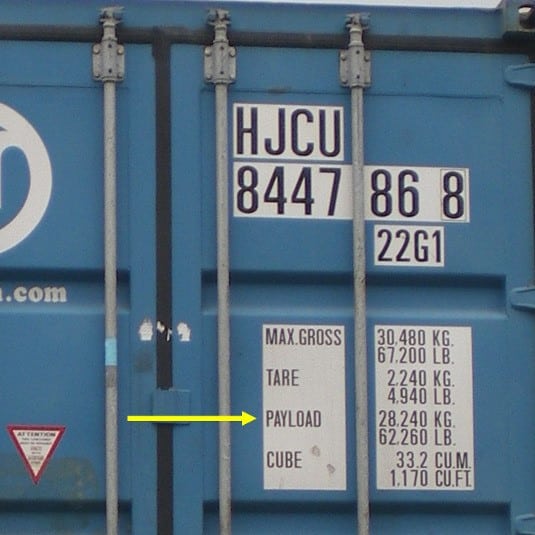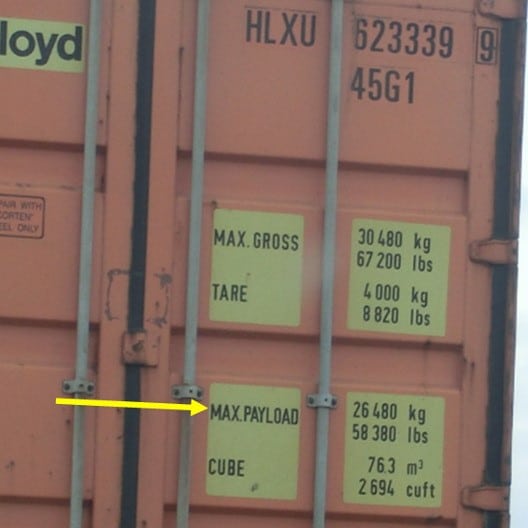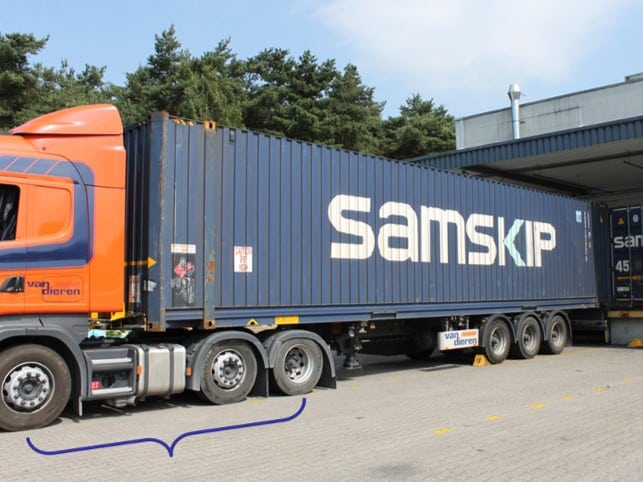
Combined transport is a frequently used word in logistics, but you often find that not everyone knows exactly what it means.
The weight 44 tons is often associated with this. However, it is not that simple.
On closer inspection, this is an EU regulation with the unwieldy name:
COUNCIL DIRECTIVE 92/106/EEC
dated December 7, 1992
on the establishment of common rules for certain types of transport in the
combined freight transport between Member States

This makes it clear that this regulation requires the crossing of a national border within the EU.
A container transport from Munich to Hanover with 44 tons is therefore basically inadmissible because the German border was not crossed.

Unfortunately, it is often the case that the communication between the carrier and the shipper is not clear. This can be seen from the fact that the shipper’s weight planning is based on 44 tons, but the transporter provides a combination consisting of a two-axle tractor unit + container chassis. However, such a combination is only approved for up to 42 tons.
It is important to merge or exchange information between the shipper and the carrier in such a way that the transport can be carried out properly. This is the task for everyone involved, which of course requires detailed knowledge and expertise.
However, dangerous half-knowledge is more common practice.
The information on the payload of the containers can always be found on the right-hand rear door.


Depending on how the container is built and equipped or which steel was used, the payloads differ depending on the tare weight.
In principle, this problem is only of interest to those shippers whose cargo weighs so much that the container tends to become too heavy before it is fully loaded. Shippers who stow goods where the container is full before it becomes too heavy tend not to be affected.
When planning, it is therefore important to know the weight of the combination, consisting of tractor + chassis + container, and to determine the maximum weight of the load + stowage material, based on a weight of 40 tons, 42 tons or 44 tons.
The link https://www.ekb-containerlogistik.com/de/datenund-fakten/bestimmungen/ gives average values, but expressly points out that the company should be consulted directly for detailed calculations.

Unfortunately, only the 44-ton variant is mentioned there, which expressly requires a three-axle tractor unit. However, by far the majority of the combinations consist of two-axle tractors and may therefore weigh a maximum of 42 tons.


If you take the figures from the table above, the net load weight (load + securing equipment) would result for the following combinations:

However, practice shows that there can be considerable deviations from the above information and that overloading is therefore more likely than unlikely. Companies that want to stow containers themselves and make maximum use of the payload should therefore obtain precise information from the haulier about the type and weight of the combination and ensure that it is adhered to.
Companies that have a truck scale also have the opportunity to determine the maximum weight of the load by weighing it.
Weigh the empty trailer at the entrance and subtract this value from the total weight of 40 tons, 42 tons or 44 tons. This results in the maximum payload for each container type.
The disadvantage of this method is the fact that this information is only available shortly before loading and it is no longer so easy to reduce the weight or quantity of the load.

The solution is to define a maximum load weight in consultation with the carrier and their specifications, at which overloading is unlikely, including the stowage equipment.
This plan specification can serve as a guideline for the sales department when making offers to the customer and at the same time as a specification as to which container type must be requested for the specific transport.
Trusting that the carrier will draw the right conclusions regarding the design of the container combination from the information on the load weight is extremely risky and should be avoided.
Yours, Sigurd Ehringer
<< To the previous post
Sequence 18: Verified gross weight – container
To the next post >>
Episode 20: Dunnage bags load securing – Part 1

Tobias Kreft
Rothschenk assortment
Our customer center has only one goal: to turn your problems into solutions. Whether standard stowage cushions, bestsellers or load securing personally tailored to your needs -. we accompany you consistently from A as in field service to Z as in certification. That is our promise to you, as a leader in our industry.
We attach great importance to professional cargo securing. That is why we have our own production, which ensures reliable operation through modern manufacturing technologies and strict quality control. Thus, we offer our customers a comprehensive and high-quality range of services in the field of transport logistics.
DIN ISO 9001:2015, EMAS and Ecovadis are not foreign words to you? Then it's time to work with the best.
You don't take any risks with us - we have been awarded the Platinum Medal on the EcoVadis sustainability rating platform.
As a load securement company, we are proud to have several certifications that validate our sustainability efforts and our commitment to environmental protection and social responsibility. For you as a purchaser, this means that we demand and promote the implementation of high environmental and social standards both within the company and along the supply chain.
G&H GmbH Rothschenk
Industriestrasse 5 & 7-10
97239 Aub
Phone: +49 9335 97 15 – 79
Fax: +49 9335 97 15 – 15
E-mail: info@rothschenk.de
Collection/delivery
Mon – Fri: 8:00 – 15:00
Office hours
Mon – Thu: 8:00 – 17:00
Fri: 8:00 am – 1:00 pm
G&H GmbH Rothschenk
Industriestrasse 5 & 7-10
97239 Aub
Phone: +49 9335 97 15 – 79
Fax: +49 9335 97 15 – 15
E-mail: info@rothschenk.de
Collection/delivery
Mon – Fri: 8:00 – 15:00
Office hours
Mon – Thu: 8:00 – 17:00
Fri: 8:00 am – 1:00 pm